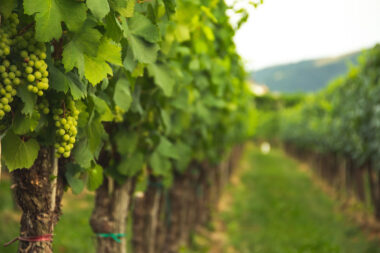Introduction
Water conservation technologies are essential tools for addressing the global challenge of water scarcity. Focused on sustainable use, these innovations, including drip irrigation and rainwater harvesting, aim to optimize water consumption in agriculture and landscaping. By minimizing waste and enhancing efficiency, they play a critical role in ensuring water security and supporting environmental sustainability.
Drip Irrigation
Drip irrigation is a highly efficient irrigation method that delivers water directly to the roots of plants, minimizing evaporation and runoff. It’s particularly effective in conserving water and nutrients when compared to traditional irrigation methods.
Materials Required for Drip Irrigation
- Water Source: This can be a well, borehole, reservoir, or municipal water supply.
- Pump Unit: Required if the water needs to be pressurized.
- Backflow Preventer: prevents water from flowing back into the main water supply, protecting it from contamination.
- Filter System: Essential for removing sediments that could clog the drip emitters. Types include screen filters and sand filters.
- Pressure Regulator: Reduces and maintains water pressure within the system to optimal levels, usually around 10–30 psi.
- Mainline and Submain Pipes: Typically made of PVC or polyethylene, these distribute water from the source to the drip lines.
- Drip Lines (Drip Tubing): polyethylene tubing with pre-installed emitters at set intervals. Specifications vary based on crop requirements.
- Emitters or Drippers: Devices that release water at a controlled rate directly to the plant roots. Flow rates can vary, commonly between 0.5 and 2 gallons per hour (gph).
- Valves: Control the flow of water to different sections of the system. Can be manual or automated.
- Fittings and Connectors: Include tees, elbows, end caps, and couplings for connecting tubing and components.
- Micro Sprinklers or Micro Sprayers (optional): for areas needing broader water coverage.
- End Caps or Flush Valves: For flushing the system to clear out debris.
How Drip Irrigation Works
Drip irrigation works by slowly applying water to the soil directly where plants need it most at the roots. This method significantly reduces evaporation and runoff, making it highly water efficient. Water is delivered through a network of valves, pipes, tubing, and emitters under low pressure.
Step by Step Process for Setting Up Drip Irrigation
Step 1: Design the System Layout
- Begin by mapping out the area to be irrigated, noting the locations of plants or crops and their water requirements.
- Design the layout of mainlines, submains, and drip lines based on the area’s topography and the plants’ needs.
Step 2: Install the Water Source Connection
- Install the pump unit (if necessary) and connect the system to the water source.
- Attach the backflow preventer to prevent contamination of the main water supply.
Step 3: Filter Installation
- Install the filter system to remove debris and prevent the clogging of emitters. The choice between a screen filter and a sand filter depends on the quality of the water.
Step 4: Pressure Regulation
- Install a pressure regulator downstream of the filter to maintain optimal water pressure in the system.
Step 5: Lay Out Mainlines and Submains
- Using PVC or polyethylene pipes, lay out the mainline from the water source across the irrigation area.
- Connect submain pipes to the mainline to distribute water to different sections.
Step 6: Drip Tubing Installation
- Roll out drip tubing along the rows of plants or crops, cutting and connecting as necessary with fittings.
- Install emitters or use pre-installed emitter tubing, ensuring they are placed close to the plant bases.
Step 7: Connect Emitters
- Attach emitters to the drip tubing at locations corresponding to the plants. Ensure the chosen emitters meet the water needs of the specific plants.
Step 8: Install valves and connectors.
- Install valves to control water flow to different sections of the garden or field.
- Use fittings and connectors to make any necessary connections between pipes and tubing.
Step 9: System Flush
- Install end caps or flush valves at the ends of drip lines.
- Flush the system to remove any debris before the final use.
Step 10: Test and Adjust
- Test the system to ensure it works correctly, adjusting emitters and pressure as needed for uniform water distribution.
Implementation challenges and solutions
- High Initial Cost:
- Challenge: The initial setup cost of a drip irrigation system can be significant, especially for small-scale farmers or gardeners.
- Solution: Governments and NGOs can offer subsidies or low-interest loans to reduce the financial burden. Manufacturers and suppliers can also provide cost-effective kits tailored to small-scale applications.
- System Complexity and Design:
- Challenge: Designing an efficient drip irrigation system requires knowledge of hydraulic principles, plant water needs, and landscape topography.
- Solution: Extension services, agricultural agencies, and companies specializing in drip irrigation can offer design assistance and training. Simple, user-friendly design tools and software can also help.
- Maintenance and Monitoring:
- Challenge: Drip systems require regular maintenance to prevent clogging and to repair leaks, which can be labor-intensive.
- Solution: The use of high-quality filters and regular flushing of the system can minimize clogging. Automated monitoring systems equipped with sensors can alert users to leaks or pressure variations, simplifying maintenance.
- Water quality issues:
- Challenge: Water with high levels of sediment, algae, or minerals can clog emitters, affecting system efficiency.
- Solution: Proper water filtration systems are essential. Regular cleaning of filters and the use of water treatment options can address water quality issues.
- Adaptation to Different Crop Types and Topographies:
- Challenge: Drip irrigation must be tailored to specific crop water needs and field conditions, which can vary widely.
- Solution: Customizable drip irrigation components and adjustable emitters can accommodate diverse agricultural settings. Expert consultation can help in adapting systems to specific needs.
- Lack of knowledge and training:
- Challenge: Farmers and gardeners may lack the knowledge or experience to install and operate drip irrigation systems effectively.
- Solution: Conducting educational workshops, online tutorials, and providing easy-to-understand manuals can enhance user knowledge. Peer-to-peer learning and demonstration projects can also be effective.
- Scalability and Flexibility:
- Challenge: Expanding or modifying a drip irrigation system can be complicated once it’s installed.
- Solution: Designing the system with scalability in mind, using modular components that can be easily added or rearranged, can address this challenge.
- Energy Requirements:
- Challenge: Drip irrigation often requires a pump, which can increase energy costs, especially in off-grid locations.
- Solution: Solar-powered pump systems can provide a sustainable and cost-effective solution for energy needs. Additionally, gravity-fed systems can be designed in areas where topography allows.
Case Study: Drip Irrigation Implementation in Arid Regional Agriculture
Overview: This case study examines the implementation of a drip irrigation system in a challenging arid region, focusing on a 100-hectare farm dedicated to cultivating tomatoes and peppers. Given the water scarcity and the high evaporation rates characteristic of arid climates, the adoption of drip irrigation was aimed at optimizing water use, increasing crop yield, and enhancing sustainability.
Objective:
- To reduce water consumption by 40% compared to traditional flood irrigation methods.
- To increase crop yield by at least 25% through improved water and nutrient management.
- To demonstrate the economic viability and environmental benefits of drip irrigation in arid land agriculture.
Implementation Process:
- Site Analysis and System Design:
- Conducted a thorough analysis of soil type, water availability, and crop water requirements.
- Designed a custom drip irrigation layout, incorporating mainlines, sub-main lines, and drip lines with integrated emitters spaced according to the specific needs of tomato and pepper plants.
- Technical Specifications:
- Water Source: Groundwater from a local aquifer, with salinity levels of 400 ppm.
- Pump System: solar-powered pumping station with a capacity of 10,000 liters/hour, equipped with a sand filter and a 5-micron disc filter for water purification.
- Drip Tubing: 16-mm polyethylene tubing with pressure-compensating emitters spaced 30 cm apart, delivering water at a rate of 2 liters per hour per emitter.
- Pressure Regulator: Set to maintain a system pressure of 1.5 bars to ensure uniform water distribution.
- Fertilizer Injection System: Venturi injector for fertigation, allowing precise nutrient application directly to the plant root zones.
- Installation and commissioning:
- Installed the system over a four-week period, with training sessions for farm staff on system operation and maintenance.
- Conducted a system flush followed by a week-long trial run to adjust emitter outputs and optimize the fertigation schedule.
- Monitoring and Maintenance:
- Implemented a routine monitoring program to check for leaks, clogging, and pressure variations.
- Scheduled monthly system flushes and quarterly water quality tests to prevent emitter clogging and ensure optimal system performance.
Results:
- Water Savings: Achieved a 45% reduction in water use, surpassing the initial goal, primarily due to the precise application of water directly to the plant root zones and the elimination of evaporation losses associated with traditional irrigation methods.
- Yield Increase: We recorded a 30% increase in crop yield for both tomatoes and peppers, attributed to improved water and nutrient management as well as reduced plant stress from more consistent soil moisture levels.
- Economic Benefits: The reduction in water and fertilizer use, combined with the increased yield, resulted in a return on investment (ROI) of 20% in the first year of operation. The system’s cost is expected to be fully recouped within five years through savings and increased revenue.
- Environmental Impact: The project demonstrated significant environmental benefits, including reduced groundwater extraction, minimized fertilizer runoff, and a lower carbon footprint due to the use of solar power for pumping.
Conclusion:
This case study of drip irrigation implementation illustrates the system’s viability in arid regions, showcasing substantial water savings, increased agricultural productivity, and notable economic returns. It underscores the importance of tailored system design, careful management, and ongoing maintenance in realizing the full benefits of drip irrigation for sustainable agriculture.



